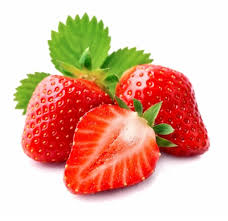
Strawberries
Aphids, thrips, thrip larvae, mites
» Can be found under the green leaf or on the surface of the berry
Over ten years ago, the preparation and washing methods for strawberries were very simple and straightforward. However, several years ago there was a discovery of thrips larvae in strawberries. The thrip larvae insect is very difficult to remove even after rigorous washing. The removal of the thrip larvae through washing resulted in a difference of opinion among various hashgachos. Consequently, different positions regarding the use of strawberries have been adopted.
Among the hashgachos there are different approaches:
1. Some hashgachos have completely banned the use of fresh strawberries.
2. Some hashgachos, use the following cleaning method without requiring any further checking.
3. Some hashgachos require the thrip /mesh cloth method to be used after the required cleaning, Steps #1 and 2 below, is done.
PLEASE NOTE:
Specialized training is an absolutely necessary requirement in order to do this method properly and effectively. The video linked below clearly presents the absolute need to be trained and approved before performing this type of inspection.
The following is the step-by-step process of cleaning, which is similar to but more complex than the thrip / mesh cloth method
Steps for cleaning strawberries
STEP 1: Prepare the Strawberries
a. Carefully cut off the green leaf at the top of the strawberry without making a hole in the top of the berry. If a hole is made in the berry, the berry should be split in half.
b. Fill a bowl / pan with cold water and a soapy solution,using enough soap to create a very soapy bubble bath for the strawberries. The bowl / pan should be large enough to accommodate the quantity of strawberries you are using and still enable you to vigorously move around the berries, as described below.
STEP 2: Wash the Strawberries
a. Place the berries into the soapy solution for five minutes, making sure not to overload the container and leaving ample room to soak and move around the berries. Thoroughly move around the produce in order to create a strawberry bubble bath.
b. Remove the berries from the water in the container. Rinse each strawberry thoroughly on all sides under a strong stream of water.
STEP 3: Final Preparation for Checking Strawberries
a. Place produce into a clean container; repeat Steps 2a and 2b. However, place only a small amount of soapy solution in order to make the strawberry slippery.
b. Drain the soapy water from the container through a mesh cloth that has been placed between 2 colanders, and ensure that all the contents (including the sudsy film adhering to the container walls) are washed from the container and drained through the mesh cloth.
c. Wash each strawberry over the colander.
d. Remove mesh cloth from between the colanders and place on light box. PLEASE NOTE: You are checking the contents that were in the water
STEP 4: Checking Strawberries
a. Use a spray bottle to dissipate suds for easier inspection.
b. Use a toothpick and the spray bottle to assist in separating all debris until completely separated.
c. Carefully inspect mesh cloth for the presence of insects (aphids, thrips, mites).
d. If even one insect is found, this can indicate that there are more insects in the strawberries, and the entire process (Steps 2, 3, & 4) should be repeated. This process should not be repeated more than once.
e. If no insects are found, you may use the strawberries.

